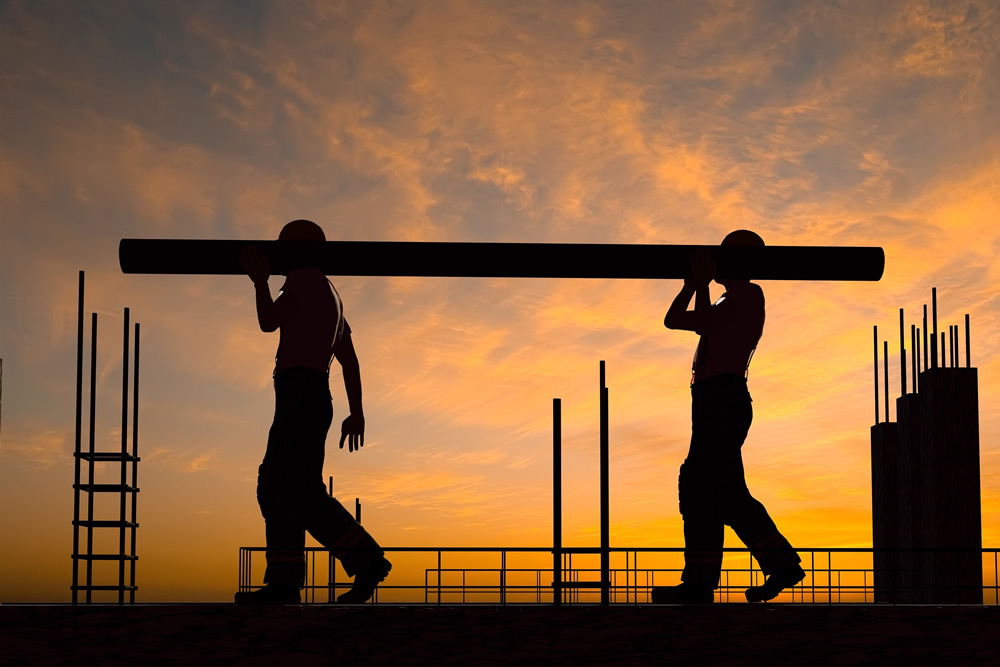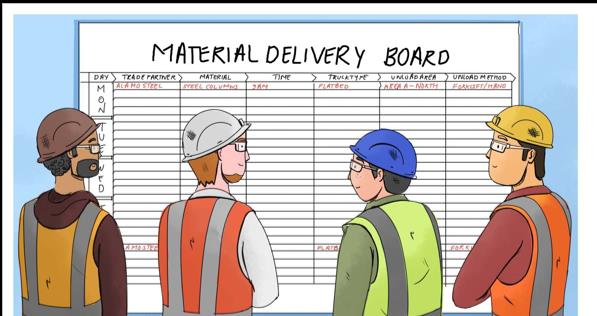Learning about the 8 types of waste on a jobsite is an important step in your Lean journey, because the first step to overcoming waste that will plague your jobsite is being able to recognize and identify the 8 Wastes so you can begin the work of eliminating them.
If you are not familiar with the 8 types of waste, let’s start with the basics. Waste is defined as any task that doesn’t add value. Unfortunately, many of the activities performed on construction projects are non-value added, or waste. There are several acronyms to remember what these wastes are; the one we used in our book, The Lean Builder, is DOWNTIME.
The 8 Types of Waste
DOWNTIME stands for the following wastes:
- Defects
- Overproduction
- Waiting
- Non-Utilized Talent
- Transportation
- Inventory
- Motion
- Excess
To learn more about all the 8 wastes of Lean click here.
In this post, we are going to discuss the waste transportation and help you understand how you can be on the lookout to eliminate this waste when it creeps up on your projects—and it will!
The waste of transportation is defined as unnecessary movement of materials or equipment. Transportation waste can involve movement from one jobsite to another, or from a material laydown area to the work area. Why is this a problem? Among other things, this waste is a productivity killer, and it exposes your materials to the potential for damage.
What Transportation waste looks like on the jobsite
Transportation waste on a jobsite is easy to see if you are looking for it—and where there is one waste, there is often another. For example, the transportation waste could occur when there is excess inventory (waste #6) that exists on the jobsite. An example of what this looks like would be when a mechanical contractor brings all their ductwork for the entire project onsite at the same time, and then they spend time moving it around the project where it is needed or to get it out of the way of the other trades onsite. Other Transportation waste examples include bad logistics planning, having to make multiple trips to a supply house due to lack of staging, and poorly measured and cut material which results in needing to travel to get more material. This transportation (or travel time) is waste which costs time, money, and adds no value to your project.
Why Transportation waste is bad for your jobsite
Transportation waste on your project can cause a number of issues that may or may not be immediately obvious. Even if it is marginal, workforce efficiency is lowered because your trade partners are spending their time transporting materials and equipment back and forth instead of putting work in place. The longer the materials move around the jobsite, the longer your project goes without any value being added. The flow of work will bottleneck, and productivity suffers. As a Lean builder, you must be looking for waste on your jobsites and the root cause behind why it is happening. Only then can you stop it from occurring.
How to get rid of Transportation waste on your jobsite
The best way to reduce transportation waste on your jobsite is to carefully monitor what materials are being brought onto the project and when. By ensuring deliveries are Just-in-Time (a system for producing or delivering the right amount of equipment or materials at the time it is needed for install) you will minimize the waste involved moving things twice or having too much inventory. We recommend monitoring transportation waste at the daily huddle via a visual material delivery board. On the board you can track the following:
- Who has the delivery?
- What is being delivered?
- When is the delivery scheduled (day and time)?
- What type of truck is it coming in?
- Where is it going to be unloaded?
- How is it going to be unloaded?
Tips to Identify the 8 Types of Waste
Here are a few tips learned over the years to help teams learn to see the waste:
- Look for it every day – Morning huddles and toolbox discussions are ripe opportunities to teach last planners about transportation waste. Encourage your foremen and “boots on the ground” to come to the daily huddle meeting ready to report on any transportation wastes they have identified and if they were able to resolve it.
- Be accountable for it – As in most cases in the field, visual communication is key. Try making an Eight Wastes board and post in the job trailer or jobsite for yourself and/or your trade partners and field leaders to see on a continuous basis. When items come up, add a person’s name who is responsible for removing or reducing the waste. The more your trades are empowered and held accountable for waste reduction, the more efficient your jobsite will become.
- Eliminate it. Waste can suck the life and morale out of a jobsite culture. It’s disrespectful and will consume valuable resources that would be better utilized in an effective and productive manner. As LCI puts it, “It’s the enemy of good construction.” Make it your personal mission to be relentless against the wastes that you see on your jobsite, even if you’re not the CM/GC. Control what you can control—others WILL recognize it and behaviors WILL
If you have a good tip you would like to share on how to learn to see waste or would like to share an Eight Wastes of Lean story from one of your projects, please let us know in the comments below!










